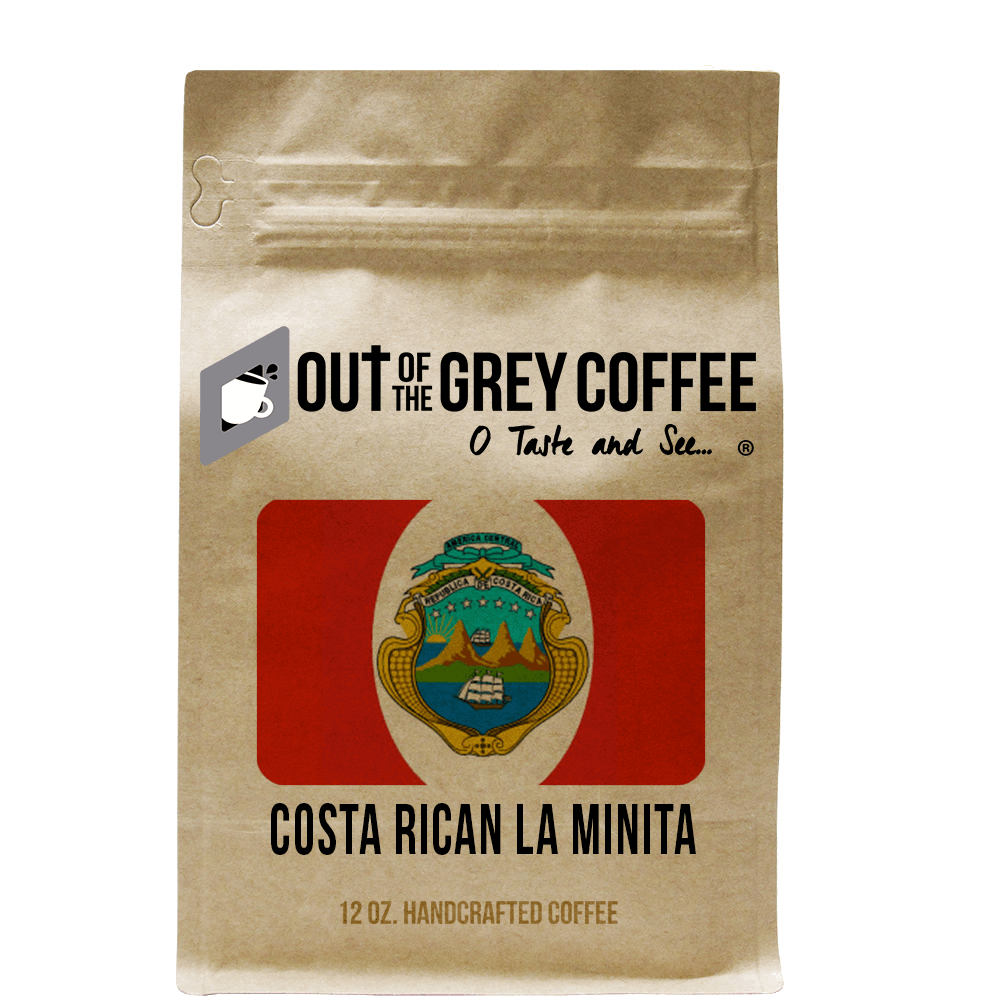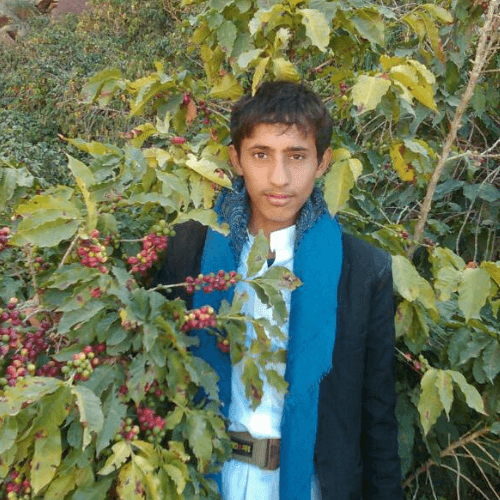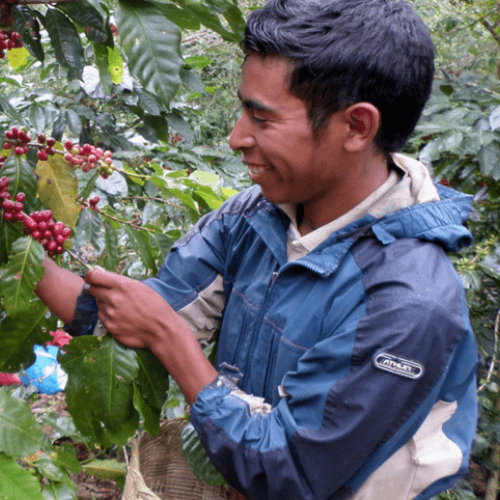



Single Origin - Costa Rican La Minita SHB - Rainforest Alliance Certified Coffee
$24.99 - $25.48
Smooth, rich body with brilliant acidity and sweet flavors of citrus, caramelized sugar and creamy chocolate. Impeccably balanced with long, clean finish.
Industry Review: The Coffee Attendant
Perfect choice for coffee drinkers suffering from digestive issues, or those that just prefer low acidic coffees with a higher level of antioxidants.
100% delicious!
Roast: Dark Medium
Processing: Washed
Altitude: 1300 - 1800 M.A.S.L.
Harvest: December - February
12 oz. Handcrafted Rainforest Alliance Certified Coffee
La Minita means “the small mine.” Traditionally, local legend has it that pre-Columbian indigenous people came to look for gold on the land that is now the farm.
La Minita is located about one and a half hours drive south of San Jose, in the coffee producing area called “Los Santos.” The zone known as Los Santos includes a series of small villages and towns that begin in the north with San Juan Norte and end in the south with Santa Maria de Dota. The farm is located within the region from which fruit coffee is received by the Tarrazú coffee mills. The coffee from our farm is considered a Tarrazú coffee, but we believe the geography and microclimate of the farm produces a much more balanced and flavorful coffee than other Tarrazú coffees.
The plantation consists of a total of 1,200 acres of land of which 800 acres are currently in production. Of the remaining 400 acres, there are 200 acres of natural forest preserve located on the south side of the farm that will never be brought into coffee production.
The land lays on an east-west axis, bordered by the Tarrazú river to the south and the Candelaria river to the north. These two rivers converge at the western base of the mountain spur upon which the farm is situated. The soil is a pale clay, tan to light red.
Although there is a section of the farm that approaches 6,000 feet in altitude, the central block lies between 3,750 feet and 5,000 feet. The main house is located at an altitude of 4,850 feet. Despite the considerable altitude differences, the mean temperature variance is minimized by the cooling effect of the large river flow that borders the farm. Importantly, the farm faces the west, which allows for gradual warming in the morning and slow cooling in the evening.
There are approximately 680 acres of coffee in production. They have four varieties of trees under cultivation: Caturra, Catuai red, Catuai yellow, and Hibrido Tico. After many years of experimentation, statistical analysis, and cup quality testing, they have decided to stay principally with the Caturra and to continue to maintain a small amount of the old Hibrido.
They plant approximately 2,500 trees per acre on the farm depending upon the geography of the area being planted and the variety of tree used. This results in a total of about 1,700,000 trees on the farm.
They employ a selective pruning system to maintain the health and productivity of the coffee trees. Highly skilled employees monitor the coffee trees and as necessary, approximately every five years, the tree is pruned. This will encourage the tree to begin new growth. One year after this cutting, the tree is shaped maximize its continued growth. All this work is performed using hand tools. Each year approximately 350,000 trees are pruned.
After fifteen to twenty years, the trees become exhausted and are replaced with trees from our nursery. This nursery is located on a small, protected area of the farm. The nursery trees are nurtured on this farm for one year prior to being transplanted to the main farm. In a typical year, we transplant about 150,000 trees.
They use the fast growing, broad-leafed “poro” as our shade tree. These trees are planted on a grid of varying density depending on the light requirements and need for temperature control in each individual section of the farm.
They produce one crop of coffee each year. For them, the cycle begins with the first rains of the year. These rains normally occur sometime between the end of March and the beginning of May. The timing of the first rain is essential, for it is the rain that signals the tree to begin flowering.
Approximately ten days after the initial rains, small honeysuckle-like flowers form on the trees. Millions of flowers are produced in a spectacular display. The entire farm looks like it is covered in freshly fallen snow. It is a fleeting event, for a few days after they appear, the flowers whither and fall off the trees. The flowering is of critical importance to the coffee crop, for the node where each flower formed will produce a single coffee cherry, and within this cherry are the coffee seeds which will become the coffee bean. If the flowering is adversely affected by the weather, pollination will not occur, no cherry will form and there will be no coffee.
From the onset of the initial rains, we enter the seven-month rainy season. During the rainy season, there will typically be four to six hours of rainfall every day. These rains nurture the trees and encourage the growth and development of the green coffee cherries. The rains also have the potential to create huge problems of road and soil erosion. You will notice that all the coffee is planted on terraces interspersed with complex water drainage channels. Thousands of man hours are required during the rainy season to control erosion and maintain the road system of the farm.
The rains also encourage the growth of weeds among the coffee trees. They do not use herbicides to control the weeds at La Minita, but instead hire contract labor who use machetes to clear the weeds by hand. They do not believe in introducing unnecessary chemical influences on the farm, it is their home and the wellbeing of its plants, animals and people is important. Each year, every acre of the farm is weeded three times.
All sections of the farm are soil tested every year, and they base our fertilization formulas on the results of these tests. They are careful to use the minimum amount of product necessary to achieve production, and they apply it to the base of each tree three times. This is done for both economic and environmental reasons. Additionally, a spray of minor elements (zinc, boron, copper, etc.) is applied to the underside of the leaves. This spray nourishes the plant and protects it from diseases.
Insecticides are not used on the farm. Fortunately, the geographic advantages of the farm’s climate and altitude limits the number of insect pests. Most importantly, through our careful cultivation and weeding techniques we produce coffee trees which are strong and healthy. The few pests that we have do not significantly affect the trees.
With the end of the rainy season comes the ripening of the coffee cherries. The large green cherries begin to turn either red or yellow and fill with the sweet miel (honey) that surrounds the seeds. Unlike the flowering, the ripening of the fruit is slow and uneven. Because of this, harvesting the fruit must be performed carefully. Only the ripe fruit is picked, leaving the still unripe fruit for subsequent pickings. We pick each tree on the farm up to five times to harvest the fruit.
The crop cycle of the farm ends with the “repela”, or the final picking of the trees. This usually occurs at the end of February, and during this pass, all the coffee cherries, both ripe and unripe, are removed from the trees, preparing the trees for the next year’s cycle.
The terrain of the farm is very difficult, and they move a great deal of weight in coffee fruit. To aid in the transport of the coffee and to provide access to all areas of the farm, there are a total of about 30 kilometers of internal road system. As well as the office and storage buildings, there are 23 housing units within the farm. There is also a camp with showers, indoor plumbing, and cooking facilities for pickers who live too far away to travel every day. All the water used in these facilities is fed by springs and is perfectly safe to drink.
They have a core of 80 full time employees. This includes managers, farm workers, clerical staff, drivers, and maintenance personnel. Full time employees have access to on site housing for themselves and their families on the farm when available for as long as they need it. This core of people is augmented by approximately 150 contracted laborers to perform weed control and over 600 pickers during the harvest. It is their policy to assist their workers by actively supporting them in their lives outside of working hours. They contribute matching funds to the workers’ association savings plans. This money is used for retirement savings or to fund large purchases such as appliances or furniture. Each year the association organizes a bus trip to Golfito in Southern Costa Rica where large tax-free purchases can be made.
The association encourages and funds sports programs. There is a soccer team for the adult men, as well as a junior team.
They have set up an at cost commissary on the farm for the workers. Bulk purchasing power is used to supply inexpensive goods to cover the workers’ basic needs. Additionally, there are 3,000 citrus trees (oranges, grapefruits, and limes) as well as avocados and mangoes throughout the farm.
Their own medical clinic is located on the farm near the administration building. A doctor staffs this clinic two days a week to administer to the needs of the workers and their families. They also have a dentist at the farm three days a week to attend to the dental needs of the farm community. The goal of this clinic is to provide preventative care. Detailed records of the medical histories of every person on the farm are kept for future reference. Private hospital care for more serious illnesses is also available.
In San Jose, they have eight people who handle the accounting, quality control, mill management and exportation of all the coffee that we ship. They supervise the preparation of the coffee at the mills and coordinate subsequent shipping. Not one bean of coffee is shipped without prior quality testing and approval at this office.
Since ootgCoffee bought its first bags of Costa Rican microlots, the country has become a model for other buying relationships around the world. The ability for a producer to separate top lots from more standard coffees; sell the lots at corresponding, appropriate prices; and gain individual recognition for their work and quality, has had a rippling effect among the communities from which we source, and the response has been tremendous. Every year, more producers express an interest in improving the picking, sorting, and processing they do on the farm level in the hopes of earning better prices and achieving a level of market visibility.
While we have a core set of partners—with micro-producers as well as co-ops—whose coffees are the standard-bearers for our Costa Rica offerings year by year, we are always meeting new producers and creating connections that result in some of the most exciting, innovative, and certainly delicious coffees that the country has to offer.
HISTORY
Coffee was planted in Costa Rica in the late 1700s, and it was the first Central American country to have a fully established coffee industry; by the 1820s, coffee was a major agricultural export with great economic significance to the population. National output was greatly increased by the completion of a main road to Puntarenas in 1846, allowing farmers to more readily bring their coffee from their farms to market in oxcarts—which remained the way most small farmers transported their coffee until the 1920s.
In 1933, the national coffee association, Icafe (Instituto del Café de Costa Rica), was established as an NGO designed to assist with the agricultural and commercial development of the Costa Rican coffee market. It is funded by a 1.5% export tax on all Costa Rican coffee, which contributes to the organization’s $7 million budget, used for scientific research into Arabica genetics and biology, plant pathology, soil and water analysis, and oversight of the national coffee industry. Among other things, Icafe exists to guarantee that contract terms for Costa Rican coffee ensure the farmer receives 80% of the FOB price (“free on board,” the point at which the ownership and price risks are transferred from the farmer/seller to the buyer).
Costa Rica contributes less than 1% of the world’s coffee production, yet it has a strong reputation for producing relatively good, if often mild quality. One way that Costa Rica has hoped to differentiate itself among coffee-growing nations is through the diversity of profiles in its growing regions, despite the country’s relatively small geographical size. Tarrazú might be the most famous of the regions: Its high altitudes contribute to its coffees’ crisp acidity. West Valley has a high percentage of Cup of Excellence winners and grows an abundance of both the Costa Rica–specific varieties Villa Sarchi and Villa Lobos, as well as some of the more “experimental” varieties that have come here, such as SL-28 and Gesha. Tres Ríos coffee has a smooth, milder profile—perhaps more “easy drinking” with toffee sweetness and soft citrus than the more complex or dynamic Costas available. Central Valley has some of the most distinct weather patterns in the country, with well-defined wet and dry seasons: We have found some of the best natural processed coffees in this region.
In recent years, coffee producers are increasingly interested in using variety selection as another way to stand out in the competitive market: SL-28 and Gesha are becoming more common, and local varieties like Villa Sarchi (a dwarf Bourbon mutation found near the town of Sarchi) and Venesia (a Caturra mutation).
MICROMILLS
Another development that has helped Costa Rican coffee producers differentiate themselves is the proliferation of micromills, or private wet- and sometimes dry-milling facilities that individual producers or groups of smallholders will build in order to control the processing and lot separation of their coffees. By investing in equipment such as depulpers or demucilaging machines, producers can harvest, depulp, and process their coffees in a variety of ways without relying on third-party mills, which can cut down on operating costs as well as increase the asking price for coffees.
PROCESSING AND PREP
Micromills have also been at the forefront of the processing innovations that have put Costa Rican coffees in the spotlight over the past decade: Honey processing, a kind of hybrid of a washed and pulped-natural process that originated in Costa Rica, has been more and more popular and prevalent among fine, lot-separated specialty coffees, though the term “honey” and its variations will vary from mill to mill based on their techniques. At some mills, the type of honey process (typically yellow, red, or black) is achieved by removing a certain percentage of the mucilage before the coffee is dried; other mills leave 100% of the mucilage on all their honey coffees, and instead modify the drying technique to create the various honey style.
Natural processing is also rising in popularity, in part because the profile can command higher prices, and because water restrictions can make fully-washed coffees more expensive and difficult to produce.
One of the Costa Rica–specific production details are that coffee here is measured by volume, rather than weight. Each mill has a receiving area, where cherry is brought and deposited into metal boxes called cajuelas, or “trunks.” Twenty cajuelas equals roughly one fanega, which is the 100-pound unit of measure in which producer receipts are written.
When the cherry is picked ripe, the fruit is bigger and heavier than if it is over- or under-ripe, which means it will take fewer cherry to fill a fanega, and will bring a higher overall price to the coffee farmer. The country produces an average of 1.8–2.2 million fanegas annually.

